OP-ED
The first, rough draft of history: How journalism has helped not just report, but shape the course of South Africa
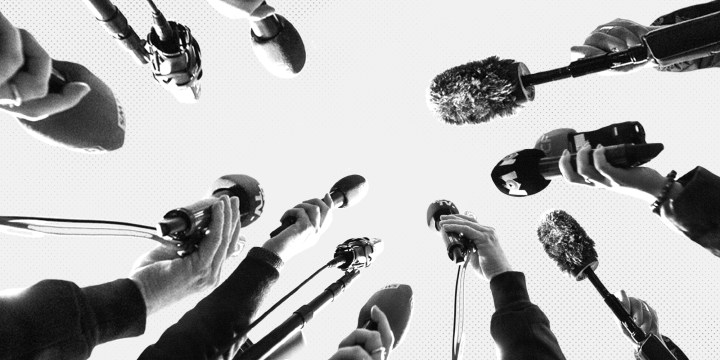
Whatever the alleged flaws of the ‘mainstream media’ may be, individual journalists (and others) are the ones telling the story behind the story in a slew of books that have been published recently on public and private sector corruption. Academic studies should be read in concert with works written by journalists, because abstract frames of reference tend to bracket out the daily nitty-gritty struggles within newsrooms.
Journalists report the first draft of history in newspapers and magazines. Some then write the detailed backstory second draft in books. Academics provide the third, theorised draft – one that explains what happened.
Despite documented evidence of massive shifts in the ownership of South African media since the mid-1990s, accompanied by extraordinary upheavals in newsroom practices, the myth of blanket white control prevails.
Despite corrupt factions of the new ruling party re-engineering the political economy enabling capture of public assets, legitimised by global accounting, PR and research firms, the idea of white monopoly capital persists.
Despite the United Democratic Front’s preference for non-racialism during the 1980s, we have retained race classifications that again objectify and dehumanise in the name of redress.
Yet, despite an onslaught on the media, the institution is largely holding its ground.
How did we get here?
Gawie Botma’s “Race talk in the South African media since Jan van Riebeeck” (2019) and Lizette Rabe’s “A luta continua: A history of media freedom in South Africa” (2020) draw on meticulous archival research.
Botma accepts that South Africa’s problems started with Van Riebeeck in 1652, as did the country’s modern media history. Van Riebeeck is described as an avid “blogger”, a quirkiness that renders “history” relevant for contemporary readers.
“Race Talk” navigates the following topics: Dutch colonial race talk; race talk in the white colonial press during British rule; race talk in the black press during colonialism and apartheid; Black Consciousness and race talk in the mainstream media; race talk in the Afrikaans press during apartheid; race talk in the English and alternative press during apartheid; the law and race talk in the media; race talk and winds of change in the media; race talk in the digital media age; and academic race talk in the media.
Botma reveals that the current preoccupation with race is quite recent. Historically, racial epithets shifted from being initially descriptive of nations, later becoming ethnically derogatory and defamatory.
Wynand Harmse’s “SABC 1936-1995. Still a key player… or an endangered species?” (2018) addresses practitioners, discussing change and technology as a concerned ex-SABC executive. Botma fractures the contemporary populist Fanonesque-derived epithets by revealing conceptual cracks, ideological contradictions, political contestations, differences, changing alliances and shifting allegiances, indicated in lexical changes in language over time.
Race-talking taken-for-granteds are upended, such that smothering contemporary political slogans are cautioned.
Where Botma’s narrative implicitly invites readers to ponder how he is himself as writer/researcher/raced, Rajesh Sundaram’s “Behind the Scenes at Gupta TV” (2018) offers a comparatively thin diary narrated in first-person novella style.
He reveals how he was illegally headhunted from India to launch the Gupta-financed television station, ANN7, that squatted on DStv between 2013 and 2017. Though recruited with promises of mentoring young black broadcasters and illegal migrant Indian workers, he reveals how editorial staff were subjected to “indentured labour” by the Guptas. The amateurish channel was to be positioned “to loot state coffers of millions in advertising funding”.
He found himself “caught in a web of lies, deceit and political thuggery”. Sundaram tells of his short unhappy immigrant experience in a matter-of-fact way.
Rabe’s “A Luta Continua” examines the swashbuckling early press. A few have actually survived to this day. She opens intriguing windows on the past, speaks to us in the present and takes readers into the future. That future is messy, confused and contested. Plots and subplots break out here, there and everywhere, rendering a Robert Ludlum thriller tame and much more narratively coherent.
The main sections of Rabe’s book are: colonialism’s terra incognita; the Unfreedoms of White Unionism and White Nationalism; and the New Democracy Dawns. Rabe’s tome is coterminous with the flood of scores of excellent exposés written by journalists and others on other sectors of the economy, polity, security, State Capture, corruption, Sanral and tax evasion.
However, “A Luta Continua” starts four centuries ago and tracks the topic from then on. The plot and story start slowly, and build in momentum through the centuries during the slower print age.
The story’s impetus begins to increase with the change of government in the mid-1990s, coterminous with the onset of the digital age, and the meshing of the new and the legacy media legislative regimes. When discussing the Zuma years, the pace changes frenetically, and the not unusual bumpy historical linear ride until then becomes a roller coaster nightmare without safety harnesses, fracturing this way and that.
Rabe reminds us of what has been, what could have been and what the consequences are going to be. What started out four centuries ago in the always difficult and very slow negotiation of press freedom, including access to a physical printing press, becomes by the end of the book, in the onset of supposed liberation, an uncontrollable tsunami of state deceit.
Fractional deception and attempted destruction of press and media freedom are the common thread in all of the books reviewed here, writing the second and third drafts of history.
The authors discussed in this article transport readers into the nuances, textures and feelings of the different periods, humanising their often flawed characters.
Today, in a period of intractable racial hardening and monological prescriptions on history, these would be seen as unforgivable ideological transgressions. The key journalists and editors are named and lauded, and many paid the price in loss of employment, health and security.
Similarly, and where appropriate, those, along with their owners who failed to adhere to professional principles, and who manipulated the media for sectarian gain, are named and shamed, which is Anton Harber’s technique in, “So, For The Record – Behind The Headlines In An Era Of State Capture” (2020).
The struggles initiated by the pioneers brought to life by Rabe are still playing out more than four centuries later. They are not just the “bad guys” (settlers) of history; they are creating it, they are shaping it and they are embedding the resulting democratic impulses for centuries to come.
If history explains why we do what we do today, all these “spirited itinerant newspapermen” with their small presses “wove South Africa into a country”. They spun “a net of mutual awareness over the thinly populated expanse of the land. They welded loose collections of individuals into communities”.
Foeta Krige’s “The SABC 8” (2019), and “Paper Tiger: Iqbal Survé and the Downfall of Independent Newspapers” by Alide Dasnois and Chris Whitfield (2019), are written by insiders to the beguilingly named “transformation” processes.
Newsrooms across the nation were sundered by suspicion, interfering managements and narcissistic CEOs. Krige tells the harrowing story of how the SABC 8 – eight broadcast journalists – stood up to censorship and the reign of terror unleashed by the then chief operating officer, Hlaudi Motsoeneng.
One of my key takeaways on reading the Krige and Dasnois and Whitfield stories is that these chilling – but often inspiring – studies alert one to just how immunised many of us may have become with regard to attacks on media freedom and on individual journalists and editors.
The enemy is often within the media institution itself. The digital age has brought more than just constant state surveillance – indeed, we are all now persons of interest – often subject to anonymous trolling, death threats, professional stalking, sexist labelling and shaming of female journalists just trying to do their jobs.
Physical harassment and rage, and of course assassination and imprisonment (in some other parts of the world), have become routine. “The SABC 8” is a most traumatising tale of officially sanctioned terror.
Sketching the third draft of history, Herman Wasserman’s “Media, Geopolitics and Power. A View from the Global South” (2018) sweeps up numerous issues through its wide-ranging essays: transitology, ethics, media freedom, professionalism, ubuntu, African culture and values, and the massive post-apartheid growth of tabloids among new entry black readers. Drawing on published media histories, Wasserman pilots the prior story into the globalising present, offering a wide-ranging one-stop reference that offers an explanation of determining structures.
The contemporary populist telling of national history cannot become a shallow ahistorical monologue. Such telling suppresses the mess, contradictions and contestations of the past; how these have shaped the present, protected democracy and modernised the country.
Glenda Daniels’ spellbinding “Power and Loss in South African Journalism – News in the age of social media” (2020) shares with Krige and Dasnois and Whitfield the character of an exposé, a call to holding miscreants to account. She illustrates the mess that confronts today’s journalism students, showing how to use social theory in making sense of what happens.
Harber focuses on when good journalists go bad; when editors lose their judgment, and when owners misuse their institutional power. He describes what happens when the victims of journalism lose their jobs, their reputations and their human rights. When facts are squandered or denied, as occurred with many Sunday Times reports, not only are individuals harmed, but so are entire societies.
And here is the inversion of the oft-repeated claim that the media misuse their power: Harber’s conclusion is that the power by corrupt elites to play the media is far greater than is the power of the media to play the elites.
The irony is that the Gupta story was broken by the smallest, least capitalised media, which outperformed the largest and well-resourced.
The different corrupt factions of the state washed their crimes through the media, destroying the tax investigative unit, the Cato Manor police unit and their associated officers, and wrecking public institutions. Harber’s book partly facilitates a tale of redemption for some of those involved.
“So, for the record…” reveals how owners imposed dominant narratives, how they compromised journalistic practices that aided and abetted large-scale criminality. Top-heavy management, too few reporters, multiple rewriting by layers of editors, splash headlining, arrogance and the mischievous removal of scare quotes undermined ethical practice.
Harber also reveals the merits of good investigative journalism. Required is sceptical reading, painstaking study of documents, working with, and protecting anonymous sources. Ordinary people stumbled inadvertently across breathtaking items of information, known as the #GuptaLeaks.
And thereby hangs another tale as parties to the initial discussions leaked information to other people who fed it on to the Sunday Times who infuriatingly scooped amaBhungane and Daily Maverick, the first group of investigative journalists to see the significance of the 100,000+ emails.
One social practice implicated in poor journalism is the “rush to publish” in maintaining competitive advantage. Downsizing of newsroom staff, juniorisation and loss of experience, loss of advertisers and reliance on dubious sources, were additional factors.
Frenzy journalism, such as Daily Maverick’s ill-advised publication of Jacques Pauw’s drunken rage, versus slow journalism as exemplified by Maverick and amaBhungane’s exposé of the Gupta takeover of the state. amaB is not a newspaper. It does not have the fixed overheads of the legacy industry, and neither is it a slave to deadlines – and being philanthropy-sustained, it has “the luxury of a different set of values and priorities”, says Harber.
State and cognitive capture are two sides of the same coin. The Gupta media, Independent and SABC were subject to the former, while the Sunday Times was a self-serving victim of the latter. The Times’s culpability was enabled by the willingness of its editors to sustain those errors over many years, to defend the indefensible, and to mute competing narratives, “digging themselves deeper and deeper into their hole as these counter narratives grew louder and louder”.
The contemporary populist telling of national history cannot become a shallow ahistorical monologue. Such telling suppresses the mess, contradictions and contestations of the past; how these have shaped the present, protected democracy and modernised the country.
The books cited here, however, provide detail, texture and evidence. In this interacting relationship, practising ethical journalists are the yin and academics are the yang. But the yin rarely is set for classroom use.
All three drafts of history should be studied simultaneously – as in three dimensions. And myths about ownership and control should be continually critiqued, as the industry is a hotbed of contradictions that mirror the wider society. DM
Keyan Tomaselli is Distinguished Professor, University of Johannesburg. He is the author of “Contemporary Campus Life: Transformation, Managerialism and Academentia” (HSRC Press, 2021). This article is summarised from his just-published article “Unpacking History, Unpacking Corruption, and Unpacking Media Analysis: Some Recent Books on the South African Media” in Communicatio — South African Journal for Communication Theory and Research.

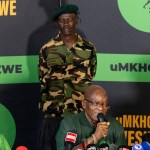



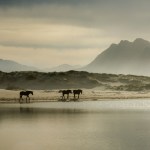
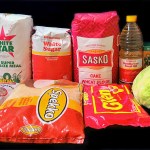

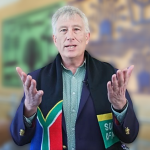










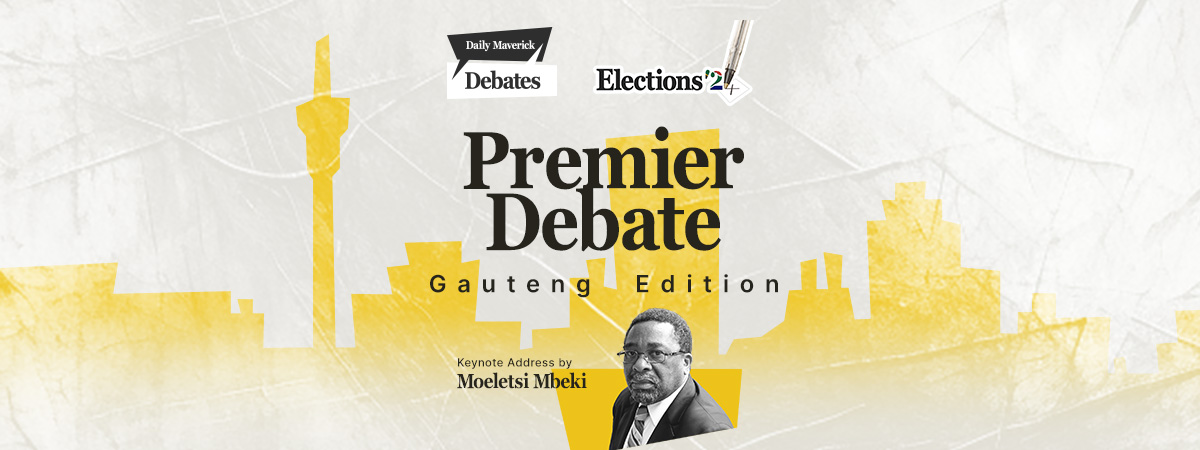
Comments - Please login in order to comment.